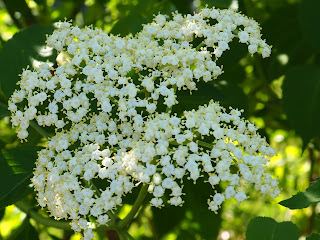Mayapples and Late May at the Preserve
We could not chronicle May at the Preserve without describing the mayapple (appropriately named) and some other stunning flowers.
The mayapple (Podophyllum peltatum) is unique, the only species in its genus found in North America. The mayapple has a single flower, and puts most of its energy into vegetative (asexual) reproduction. It forms dense populations which lack genetic diversity, since most plants in a colony are connected by underground rhizomes and originate from a single seed. Mayapples generally become dormant by early summer. However, the umbrella shaped leaves do persist on plants that form mature fruits. The ripened fruit is the only part of the plant that is not poisonous.
Honeybees, long tongued bees, and bumblebee queens are attracted to the mayapple for its pollen. The plant cannot self pollinate, nor can it be pollinated by wind because of its position underneath the leaves. In every way, the mayapple is an interesting species!
The native Virginia spiderwort (Tradescantia virginiana) also brings showy beauty to the preserve. One horticulturalist, from the University of Vermont, likens the blue and yellow filaments at the center to a "drawing of Dr Seuss." Visitors to the flower include bumblebees, honeybees, little carpenter bees, halictine bees, and syrphid flies. The flowers bloom sporadically over a period of one and a half months.
While the mayapple and Virginia spiderwort are native, the ragged robin and herb Robert are not. Ragged robin is listed as potentially invasive in Connecticut for its ability to form dense patches of growth and self seed abundantly. It thrives in the moisture rich soil at the preserve.
Herb Robert also threatens native plants by its ability to form a monoculture and grow in shaded ecosystems. Similar to ragged robin, it can self pollinate and disperse seeds over a wide area. The leaves of herb Robert are covered with glandular hairs and emit a strong scent when crushed.
The next post will chronicle our ongoing effort to control non-native and invasive plants at the preserve.







Comments
Post a Comment